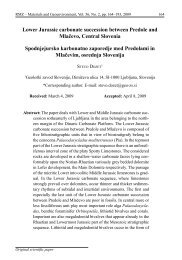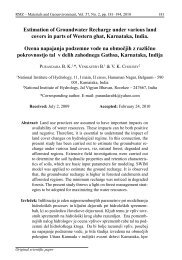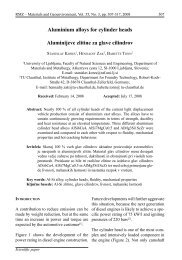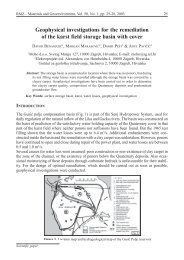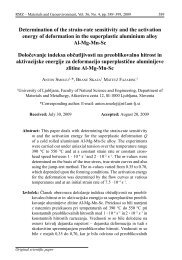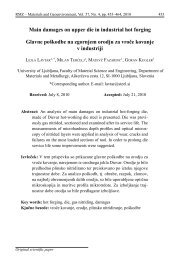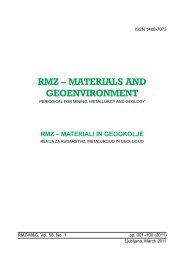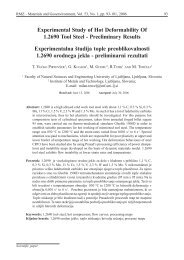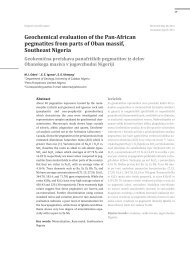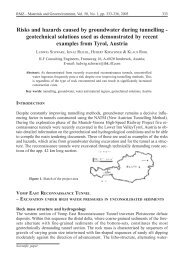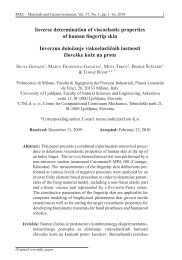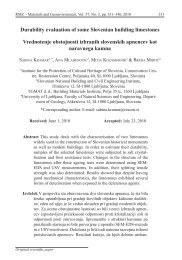RMZ â MATERIALI IN GEOOKOLJE
RMZ â MATERIALI IN GEOOKOLJE
RMZ â MATERIALI IN GEOOKOLJE
- No tags were found...
Create successful ePaper yourself
Turn your PDF publications into a flip-book with our unique Google optimized e-Paper software.
<strong>RMZ</strong> – Materials and Geoenvironment, Vol. 59, No. 4, pp. 413–428, 2012413Geophysical and sedimentological studies for reservoircharacterization of some tar sands deposits in southwest NigeriaGeofizikalne in sedimentološke preiskave za opredelitevrezervoarnih lastnosti nekaterih nahajališč naftnega peskav jugozahodni NigerijiAkinmosin, Adewale 1 , Osinowo, O. Olawale 2, * & Osei, M. Martins 31University of Lagos, Geosciences Department, Nigeria2University of Ibadan, Geology Department, Nigeria3Olabisi Onabanjo University, Department of Earth Sciences, Ago-Iwoye, Nigeria*Corresponding author. E-mail: wale.osinowo@mail.ui.edu.ngReceived: April 4, 2012 Accepted: August 16, 2012Abstract: Electrical resistivity tomography for 2-d subsurface imaginghas been integrated with sedimentological and petrophysical analysesfor detailed mapping and reservoir characterization of someNigerian tar sands deposits in southwestern Nigeria with a view togenerate a spatial distribution and reservoir quality description aswell as compare the result with already characterized deposits inother parts of the Nigeria tar sands belt.Electrical resistivity survey delineated a relatively thick (averagethickness of 50 m) high resistivity tar impregnated sand layer withresistivity value range of 1519 Ω m to 5772 Ω m, which is locatedabout 10 m below the ground surface. Granulometric analyses ofeight samples of the tar sands deposit indicate fairly well distributedreservoir sand with grain size distribution range between ф= 0.03–0.55 mm with up to 3 % fines. The reservoir sands is poorto moderately well sorted (ф = 0.94–1.63 mm), the measure ofskewness indicates a strongly coarse to strongly fine skewed (–0.–0.47) reservoir sands. Petrophysical analyses such as porosity andpermeability range from 16–24 % and 143–887 mD, respectively.The tar sands deposit was also analyzed to have between 60–90 %hydrocarbon impregnation, while bitumen saturation of the massfractions 18–30 % was recorded. The viscosity of the impregnatedReview paper



